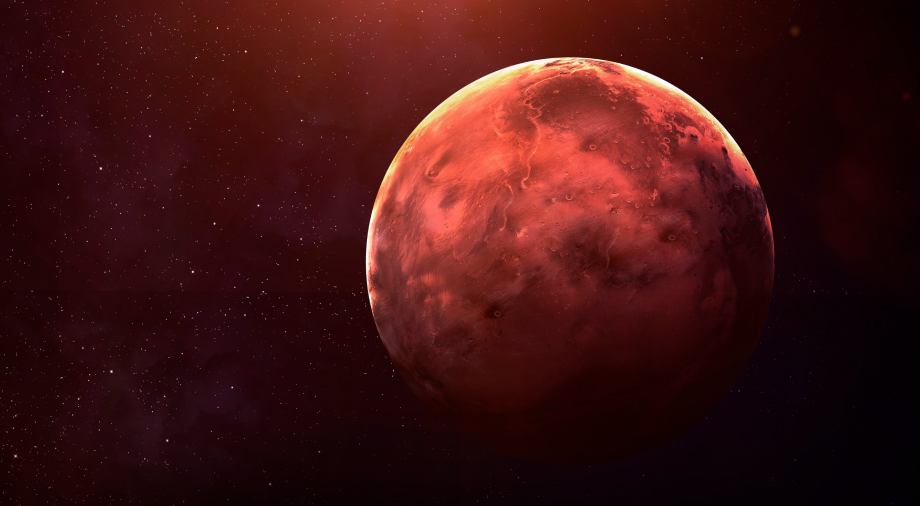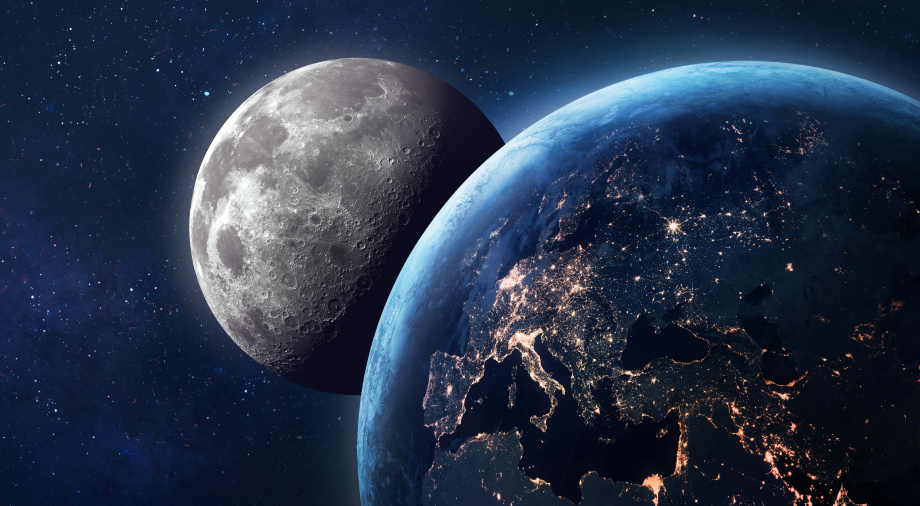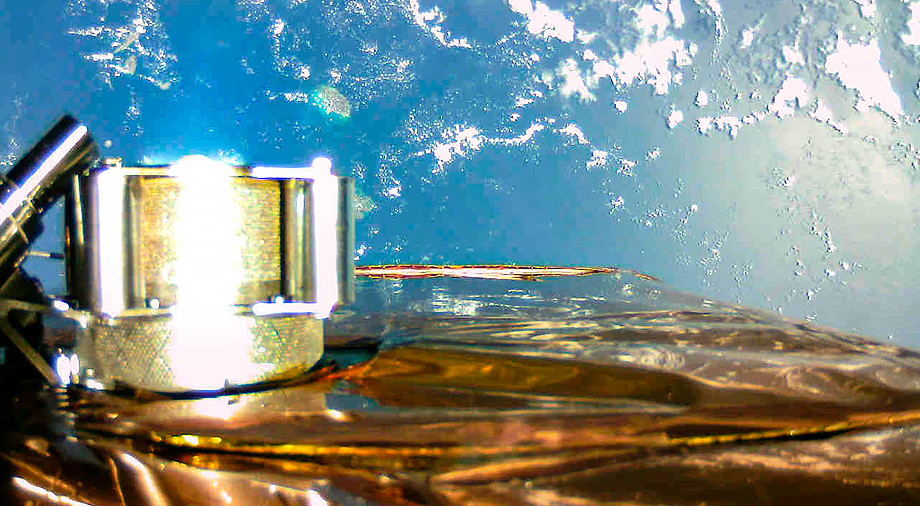Compared to Mars and Venus, Mercury may seem like a rather boring world. First of all, it is the smallest planet in the solar system. Due to its proximity to the Sun, no one has ever hoped to find even primitive life on it, much less intelligent organisms. In addition, Mercury is rather difficult to get to, posing an even more challenging voyage than a trip to Pluto.
But of course, looks can be deceiving. Although the first planet may not enjoy the same popularity as its neighbors in the solar system, it is a very curious world that still holds many secrets. Today we will talk about how humanity has studied Mercury, and why it deserves closer attention.
The elusive planet
Of all the planets in the solar system visible to the naked eye, Mercury is perhaps the most difficult to observe, especially in middle latitudes. The planet can only be seen in the relatively short period of time immediately after sunset or before sunrise, and quite low above the horizon. In this regard, there is even a rather popular astronomical legend, in which the great Nicolaus Copernicus once complained during his final years that he had never in his life managed to see the elusive planet.
Another rather interesting fact is that the Indian astronomical treatise Surya Siddhanta from the 5th century estimated Mercury’s radius to be 2420 kilometers, which was off by only 1%. But there is an important point – the estimate was based on fundamentally erroneous ideas about the angular size of the planet in the sky. The fact that the authors of the treatise turned out to be so close to the real figure is more an amazing coincidence than an indicator of some kind of lost knowledge of the ancients.
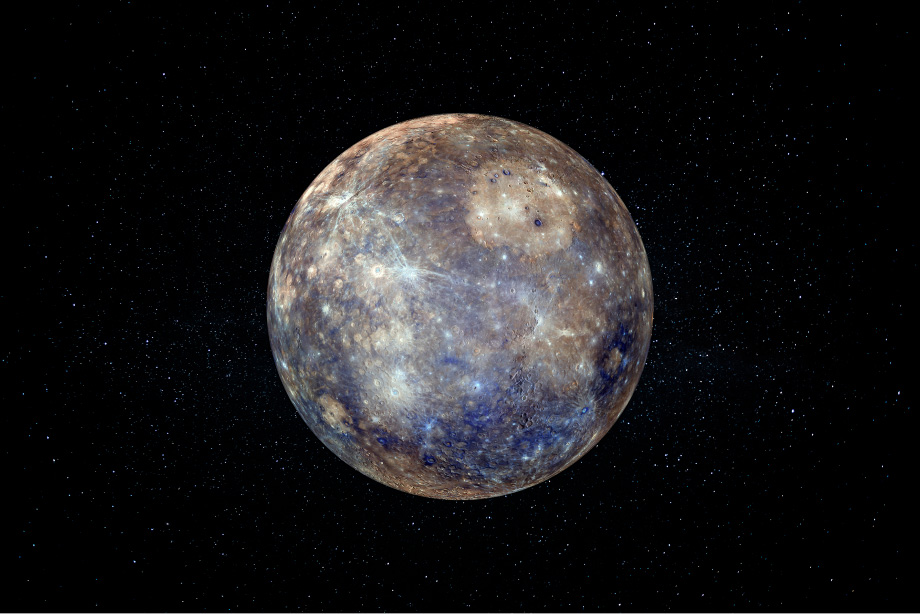
The invention of the telescope helped to increase humanity’s knowledge about Mercury – though not very much. In 1631, Pierre Gassendi first observed the passage of Mercury across the solar disk, and was struck by how small the planet turned out to be. Astronomers soon discovered Mercury’s phase changes, definitively proving that it revolves around the Sun.
As more powerful telescopes were built, astronomers began to make the first attempts to map Mercury’s surface. Unfortunately, they were not very successful. When modern telescopes came around, it became clear that all the maps of earlier eras had very little in common with reality.
In 1859, the famous astronomer Urbain le Verrier (who 13 years earlier had made the calculations which made it possible to discover Neptune) announced the discovery of an anomalous shift in the perihelion of Mercury’s orbit, which could not be explained by classical Newtonian mechanics. Le Verrier himself believed that he had found an undiscovered planet located between the Sun and Mercury. This hypothetical object was called Volcano, and le Verrier even made calculations of its orbit. But, despite numerous attempts, astronomers have never been able to find the new planet. The mystery of the displacement of Mercury’s orbit was solved only after the publication in 1915 of the General Theory of Relativity (GR). It turned out that the phenomenon was the result of relativistic effects associated with the proximity of the planet to the Sun.
Before the beginning of the space age, most scientists believed that Mercury constantly had the same side facing the Sun. This was due to the fact that during telescope observations, astronomers always saw the same light and dark spots on the surface of Mercury. Amateur stargazers quickly picked up this idea and began to draw breathtaking pictures of the world, with one side flowing with rivers of molten lead and the other covered in darkness and fierce cold.
However, in 1965, astronomy was in for a shock. Measurements made by the Arecibo radio telescope showed that Mercury rotates around its axis with a period of 58 days, with a solar revolution period of 88 days. This gives the planet a spin-orbit resonance of 3:2, meaning that it rotates fully about its access three times for every two revolutions it makes around the sun.
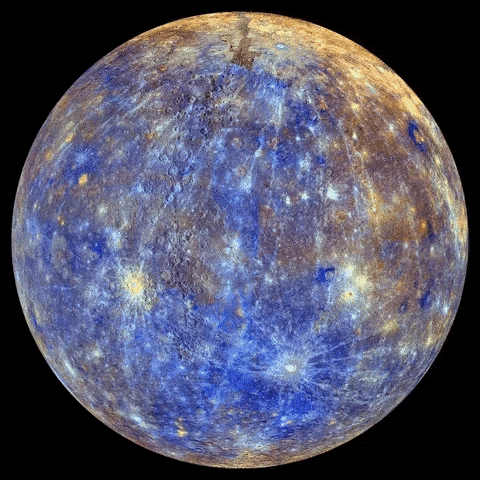
But why were astronomers so wrong? Mercury was usually observed when it was in inferior conjunction with the Earth – that is, when the planets were at the shortest distance from each other. But the fact is that, by a rather interesting coincidence, the synodic period of Mercury (the time interval between two consecutive conjunctions) is 116 days. That is, during the time between two lower conjunctions, Mercury manages to make exactly two revolutions around its axis and again turns to the Earth by the same side. Because they were always observing the same image of Mercury in their telescopes, astronomers naturally concluded that the planet was in tidal capture with respect to the Sun.
Difficulties of traveling to Mercury
One of the little-known facts about Mercury is that it, rather than Venus, is the closest planet to us. If we take the minimum possible distance between orbits, then Venus is certainly closer, but if we consider the average distance between the planets, then for most of the year, it is Mercury that will be the planet closest to the Earth.
This makes it all the more surprising that Mercury is also one of the most inaccessible planets. The reason for this is the Sun. It’s not even a matter of our star’s powerful radiation, which requires the installation of a protective screen on any probe approaching the first planet. It’s actually a question of gravity. Due to Mercury’s proximity to the Sun, the star’s gravity has a very strong effect on any spacecraft launched towards it. To enter orbit around the planet, a spacecraft would have to slow itself down from very high speeds, which would require very high fuel expenditures.
Unfortunately, the capabilities of modern rocket technology do not allow us to directly send a spacecraft with enough fuel to perform this sort of braking maneuver. Even the launch of a flyby mission to Mercury would require very fuel-intensive course corrections. In addition, Mercury has no atmosphere, which makes it impossible to use aerobraking techniques to ensure a probe’s safe descent to the planet’s surface.
This is one of the main reasons why Mercury has never been the focus of space exploration. The USSR, for example, never seriously considered sending any missions to it.

The situation there was somewhat different with the United States. In the early years of the space age, some American scientists considered sending a probe to orbit around Mercury. The plan was to use the super-heavy Saturn V rocket for launch. But steep NASA budget cuts buried this idea.
Fortunately, engineers were able to come up with a much cheaper option in the form of a flyby spacecraft which would use the gravity of Venus to slingshot the probe towards its target. This mission was designated Mariner 10, and it allowed NASA to kill two birds with one stone. On the one hand, the organization was able to fill in one of the emptier spots on humanity’s map of the solar system. On the other hand, NASA managed to also work out in practice the use of the gravitational maneuver technique, which will be useful in planning more complex and scientifically important missions to the giant planets.
Moon outside, Earth inside
Mariner 10 launched in November 1973, and made its flyby of Venus three months later. NASA scientists took advantage of this opportunity to make a series of spectacular pictures of Venus’s atmosphere in the ultraviolet range.
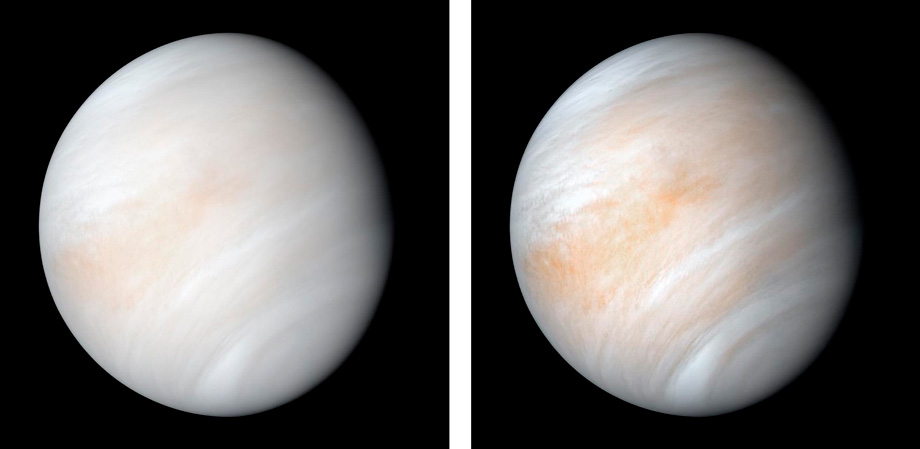
The gravity of Venus allowed Mariner 10 to change its trajectory so that it began to make periodic flybys of Mercury. The first rendezvous took place in March 1974, and there would be another two flybys before contact with the probe was lost forever.
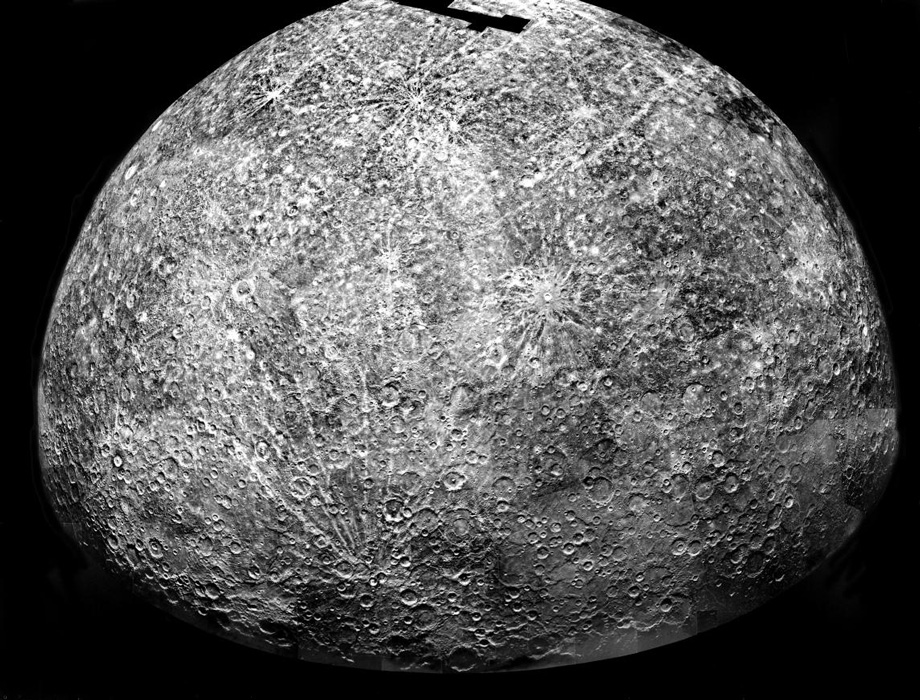
The images transmitted by Mariner 10 showed landscapes very reminiscent of our Moon. It turned out that the surface of Mercury is covered with a large number of ancient craters. Another similarity between the planet and the Moon is the almost complete absence of an atmosphere. Mercury has an extremely thin shell of gas, which consists of particles captured from solar winds or blown off the surface by them. Its atmosphere, such as it is, is so thin that its atoms collide with the planet more often than with each other.
However, it quickly became clear that the first impression was deceptive. Although Mercury may outwardly look like the Moon, from the point of view of its internal structure, it has a number of similarities with the Earth. For example, scientists were surprised to find that the planet has its own magnetic field. Recall that Venus and Mars, which are much larger, do not have planetary magnetic fields.
The data provided by Mariner 10 greatly increased scientific interest in Mercury, especially its interior. Scientists wanted to get answers to questions about what the core of the planet is and how it is able to maintain the existence of a permanent magnetic field. Unfortunately, NASA had other priorities at the time, so Mariner 10 remained the only mission in the 20th century to visit the solar system’s first planet.
Astronomers thus had to limit themselves to remote observations of Mercury. Research performed in the 1990s with the Arecibo radio telescope made a curious discovery, finding unusual bright regions at the planet’s poles. The characteristics of the signal reflected from them were very similar to those observed in the icy moons in orbit of the giant planets.
Initially, most scientists were extremely skeptical about the idea of ice on Mercury. However, after confirming the existence of ice deposits at the bottom of the polar lunar craters in the eternal shadow, this concept gradually began to gain acceptance.
In 2004, NASA finally launched the second ever mission to Mercury, designated MESSENGER. Its main goals were to completely map the planet’s surface, study its magnetic field and internal structure, and search for answers to questions about the mysterious regions at the poles.
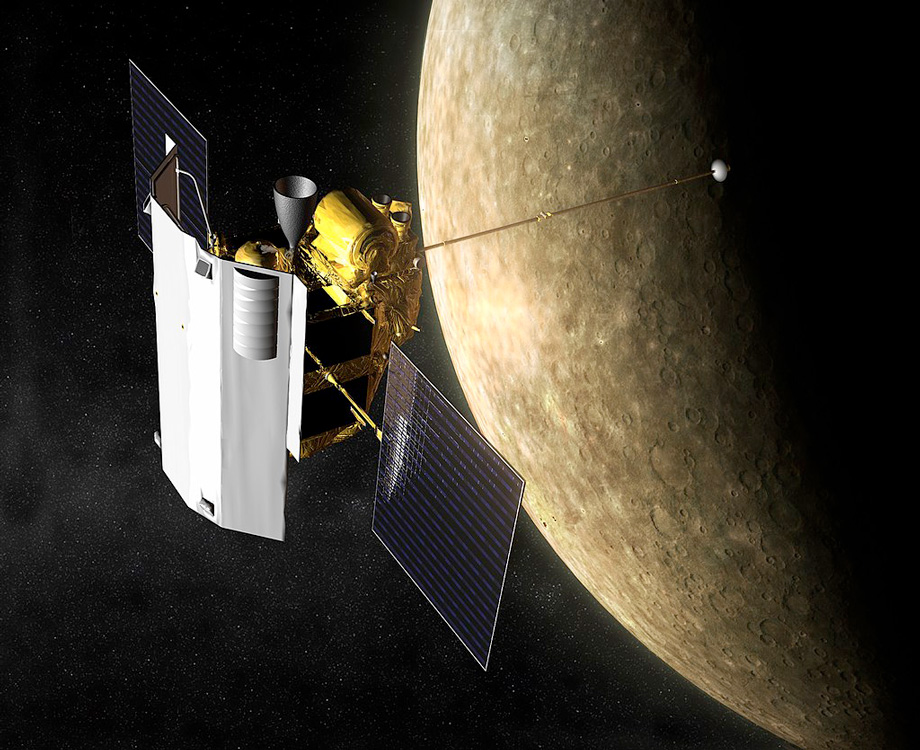
To achieve these objectives, MESSENGER needed to enter a permanent orbit around Mercury, which, as already discussed, was not a trivial task. The solution was a very complex trajectory, which included seven years of flight and six gravitational maneuvers to abate its speed (one near the Earth, two near Venus, and three near Mercury itself).
Fortunately, the calculations by NASA engineers turned out to be correct, and in March 2011, MESSENGER became the first ever artificial object to orbit Mercury. On its way to the planet, MESSENGER covered a distance of 7.9 billion kilometers, which is almost 2 billion kilometers longer than the distance between Earth and Pluto.
MESSENGER has now been in orbit around Mercury for four years, and the data it has collected has made it possible to shed light on the details of its internal structure. It turned out that Mercury has a core with a radius of about 2020 kilometers (while the planet itself has a radius of 2440 kilometers). This means that the core makes up 57% of its internal volume, compared to 17% for the Earth.
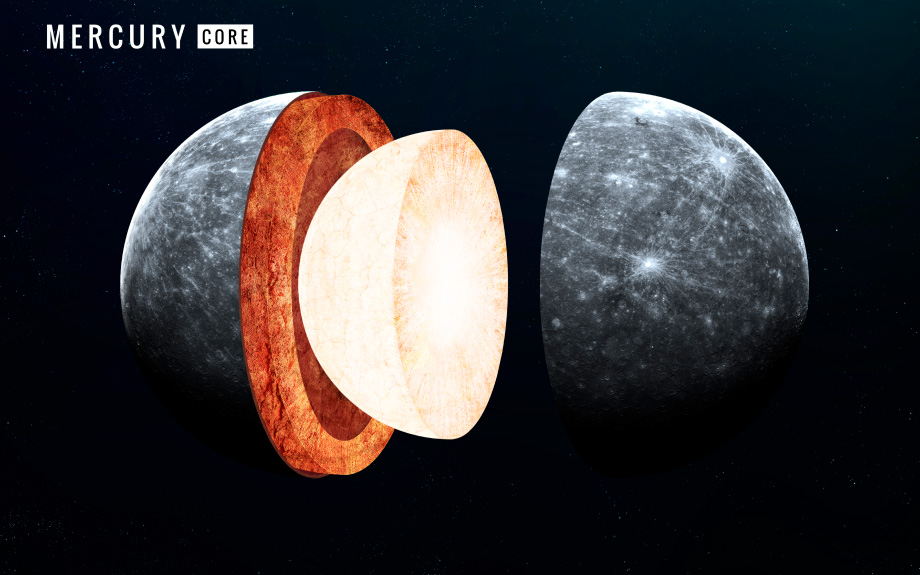
At the moment, there are two main hypotheses about the nature of Mercury’s anomalously large core. According to the more popular one, it was originally a typical rocky planet, but after a collision with some large object, Mercury lost most of its crust and mantle, which were blown into space. The other explanation is that the planet was formed in an already inner part of the protoplanetary disk that was extremely depleted of light elements.
MESSENGER has also compiled a complete map of the planet’s surface. It turned out that in addition to craters, Mercury is covered with numerous ledges stretching for hundreds of kilometers along the surface. They came about due to the fact that the planet is literally shrinking as its bowels gradually cool. Because of this, the crust of Mercury is cracking, and its edges are crawling over each other. Over the past four billion years, the total surface area of Mercury has decreased by 1%, which is comparable to the area of Turkey. The compression process continues to this day.
Another interesting discovery was related to the structure of the planet’s nucleus. Astronomers had previously believed that Mercury’s core was solid, but analysis of new data from MESSENGER forced them to reconsider this theory in favor of a molten core. How such a small planet manages to retain a liquid core remains a matter of scientific debate.
MESSENGER was also able to make accurate measurements of Mercury’s surface temperature. During the day, the planet’s surface heats up to 427°C, while at night it cools down to -173°C. Thus, although Mercury is not the hottest planet in the solar system (this title belongs to Venus), it does have the largest gap between daytime and nighttime temperatures.
The probe also definitively established what lies in the mysterious regions at the planet’s poles. Contrary to all the doubts of skeptics, it turned out that Mercury really has large deposits of frozen water at the bottom of its polar craters, which are never illuminated by the Sun.
The MESSENGER mission ended in 2015. After the spacecraft ran out of fuel, it was de-orbited by solar winds, becoming the first man-made object to reach the surface of the planet.
Future missions to Mercury
The MESSENGER spacecraft did a great job collecting a great deal of data about Mercury. However, it nevertheless failed to solve all the mysteries of the first planet. Fortunately for scientists, they will soon have another chance to get answers to their questions.
In 2018, the European Space Agency (ESA) launched its first ever mission to Mercury. The spacecraft bears the name BepiColombo, and consists of a flight module and two probes. One of the probes was built directly by ESA itself, and another built by by the Japan Aerospace Agency.
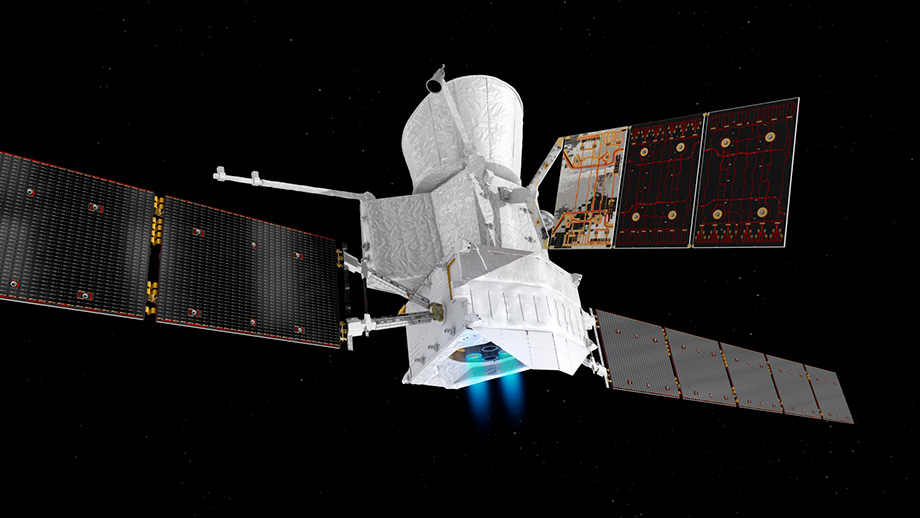
Like MESSENGER, in order to enter a permanent orbit around the planet, BepiColombo will have a long journey, including nine gravitational maneuvers at once around the Earth, Venus and Mercury itself. At the moment, the device has covered a bit over half of its journey. If everything goes as planned, BepiColombo will reach its destination in December 2025.
After entering orbit around the planet, the European and Japanese probes will separate from the transit module and begin to perform their tasks. The scientific program of the mission includes an intensive study of the geology of Mercury, its magnetic field, mapping of frozen water deposits, as well as measurements to further verify the provisions of general relativity. Scientists hope that the BepiColombo’s data will provide a definitive answer to questions about Mercury’s internal structure and the nature of its core. They are also interested in understanding whether tectonic activity continues on the planet. In addition, Mercury is the closest analogue of a number of exoplanets available to us whose orbits pass at a small distance from their stars. The results of the MESSENGER observations will help scientists better understand the nature of such worlds.
At the moment, the world’s space agencies have no formal plans to send new vehicles to Mercury. It will most likely be many years before the first planet is visited by the next mission after BepiColombo. But in the longer term, as humanity begins to fully explore the solar system, Mercury is poised to play a very important role. The presence of frozen water deposits at the poles greatly simplifies the task of creating permanent settlements on the planet. It is also worth remembering that Mercury has a magnetic field that deflects a significant share of the solar winds and cosmic rays that come towards the planet, significantly reducing the level of radiation on the surface.
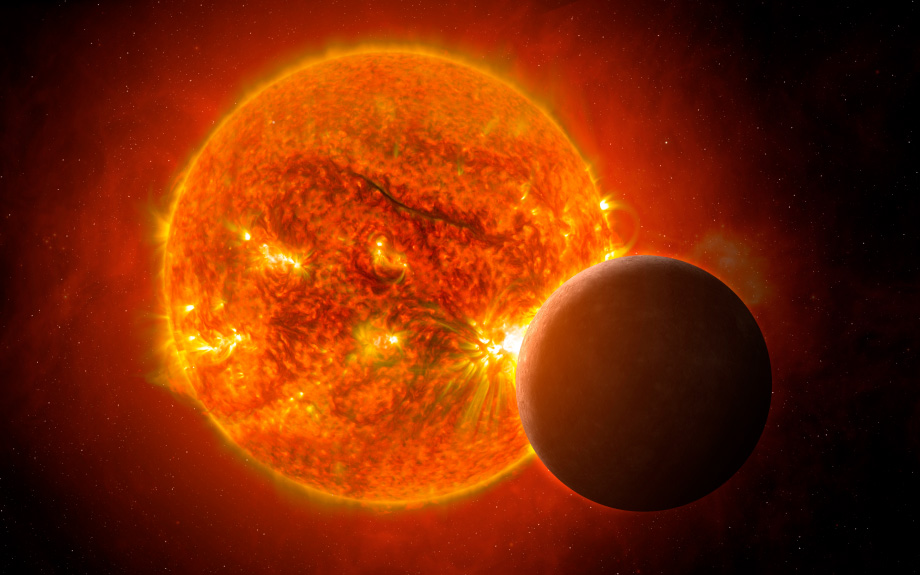
But why should mankind explore Mercury at all? The answer to this question is energy. Mercury receives much more energy from the Sun than Earth. This could be collected using solar power plants and then exported to other planets. Another option is to use this energy to accelerate spacecraft equipped with solar sails.
Another important resource on Mercury is helium-3, which is now considered by many scientists to be a sort of “holy grail” of thermonuclear energy of the future.This element is generally mentioned in the context of commercial mining projects for it on the Moon. However, the content of helium-3 on the surface of Mercury is much higher than on our Moon, which makes it a very attractive target for industrial development. So, while Mercury remains in the “shadow” of space research for the time being, all this could change in the somewhat distant but not too remote future.

